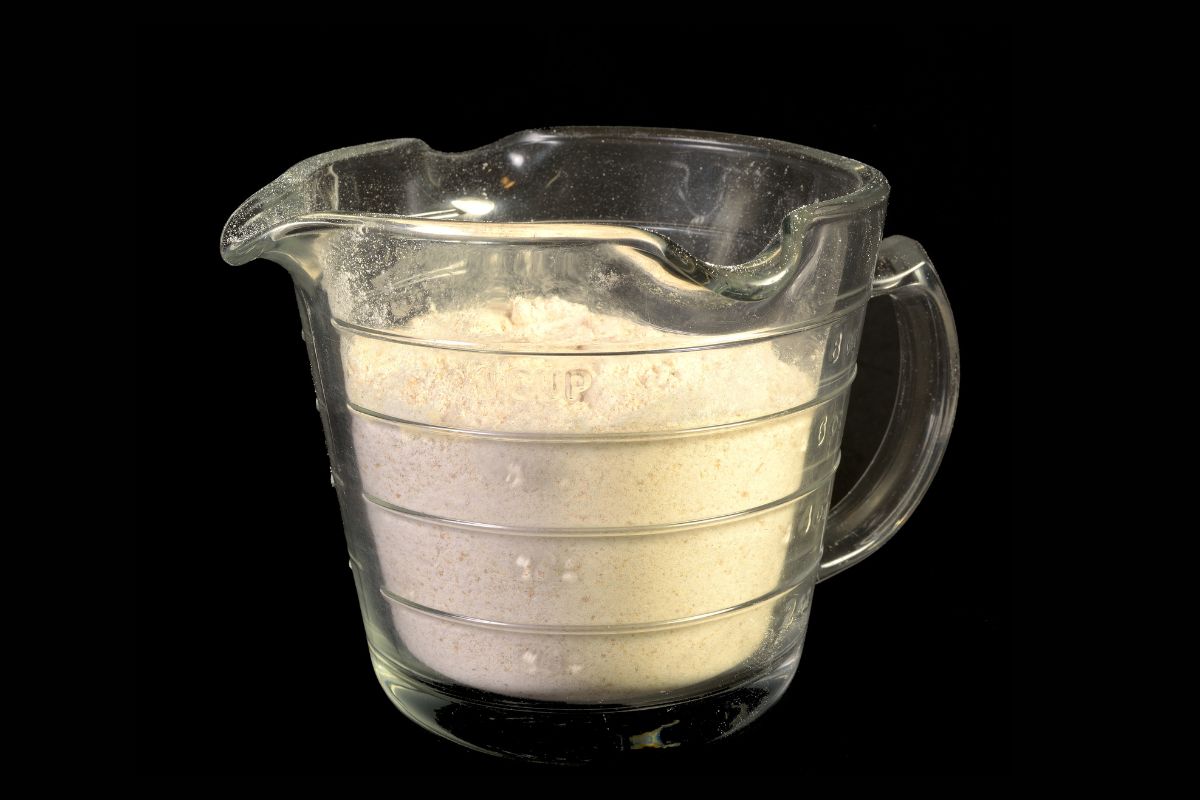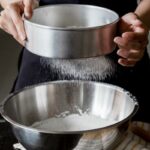If you’ve ever done any baking, you’ll know that the measurements involved can be a little confusing. For example, you’ve got cups- but how many ounces are in a cup?
Unfortunately, it’s not a simple answer, as there are both fluid ounces, which are used to measure volume, and ounces, used to measure weight.
And of course, with baking being such a precise science, it’s absolutely vital that you get your measurements right to get the results.
So, a fairly typical question bakers ask is whether it is necessary to have different cups for measuring liquid ingredients, as opposed to solid ingredients.
If that’s something that you’ve always wondered about, then luckily for you, you’ve come to the right place!
In this article, we’ll be discussing the differences between liquid and dry measuring cups, and why they matter.
What Is The Difference Between Liquid And Dry Measuring Cups?
It’s true that dry and liquid measuring cups of the same size hold the same amount of volume.
However, they are each specifically designed to best measure each type of ingredient, whether liquid or dry.
Liquid measuring cups are, as the name suggests, designed to measure liquids like water and milk. Dry measuring cups are designed to hold dry ingredients like sugar, flour or chocolate chips.
For example, let’s think about a cup of flour.
When using a dry measuring cup to measure a cup of flour, the standard procedure is to fill the cup so that it overflows, sweep off any heaped excess, and level the flour off.
A liquid measuring cup, by contrast, isn’t designed to be used this way. Instead, the liquid measuring cup is larger than ‘a cup’ with the one cup mark someway down the cup.
This is to allow the liquid room to slosh around, of course. To measure liquid with a liquid measuring cup, you fill the cup up to the desired point, with the meniscus in line with the measurement markings.
Can You Use Liquid Measuring Cups For Dry Ingredients?
In theory, there’s nothing to stop you from measuring dry ingredients in a liquid measuring cup, as they both hold the same amount of volume.
There’s no conversion necessary, as one cup in a liquid measuring cup is equivalent to one cup in a dry measuring cup.

Having said that, it can cause issues with your baking. Let’s go back to the flour example. Technically, you can measure one cup full of flour in a liquid measuring cup.
However, as the 1 cup measurement mark sits some way down the cup, there is no practical way to level it off.
Sure, you can try to scoop out any excess with a spoon, even level it with a spoon, or tap or shake the cup to level it off.
However, this will cause the flour to settle and to sit differently in the cup than it would in a dry measuring cup.
The result will be that ‘1 cup’ of flour will be more than in a liquid measuring cup than in a dry measuring cup, as it will hold slightly more flour.
Of course, this can have disastrous effects on your baking, especially when you scale up the margin or error. Too much flour can cause your baking to become too dry, or even tough.
Can You Use A Dry Measuring Cup For Liquid Ingredients?
The quick witted amongst you will have already worked out the problem with measuring liquid ingredients in a dry measuring cup.
Think about measuring out a cup of milk or water in a dry measuring cup. On a dry measuring cup, the 1 cup mark is the very brim of the measuring cup.
So, in order to get the correct measurement, you not only need to fill the dry measuring cup to the brim, you then need to be extraordinarily careful not to spill any before it makes its way into the mixing bowl.
How practical, and more importantly, how likely, is that to happen?
After all, there is a reason that liquid measuring cups don’t set the 1 cup mark at the brim of the measuring cup!
And of course, not having enough liquid in your baking because you’ve spilled some can have serious consequences for your baking, too.
Once again, you’ll be left with an end product is drier and less moist than intended.
What Is The Best Way To Measure Baking Ingredients?
If you’ve learned anything from this article so far, we hope it’s that using a measuring system of cups, half cups, and quarter cups isn’t the most exact way to measure out your baking ingredients.
This is particularly true for dry ingredients. As we noted with flour, you can fit more than ‘one cup’ worth in a single one cup measurement depending on the degree to which you pack it down.
And of course, that makes it tricky to follow recipes. Did the recipe writer employ the traditional pour it into a measuring cup and level technique?
Did they sift the flour first? Did they spoon it in and pack it down as they went?
Of course, there is a solution to this, especially if you’re serious about baking. You need to get yourself a good kitchen scale!
This way, you’ll be able to weigh out your dry ingredients to the correct gram every single time.
Having said that, many recipes still use traditional cup measurements instead of weights for their dry ingredients.
So you’ll still need your liquid measuring cup and your dry measuring cup- just get a scale too for when you’re able to follow a recipe in weights.
Final Thoughts
Liquid and dry measuring cups are different for a reason.
Using one for the other’s purpose can affect your baking by causing you to have the wrong amounts of certain ingredients, which as any baker will tell you, is a disaster.
You can avoid this by using the correct measuring cup for the type of ingredient, and investing in a weighing scale can really help you to get your measurements spot on.









